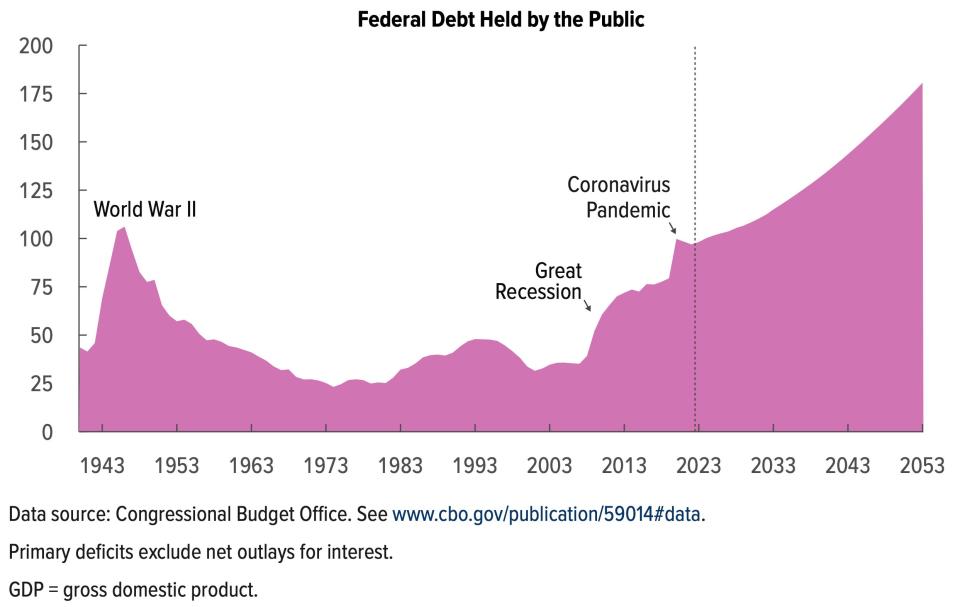The trajectory of US debt interest payments is not sustainable, Maya MacGuineas told Insider.
Interest will eclipse defense spending in four years, the Committee for a Responsible Federal Budget president said.
By 2051, interest payments will be the single largest federal expenditure, topping Social Security.
US debt this past week hit an all-time high of $33 trillion amid a ballooning federal deficit and a massive wave of Treasury bills.
To be sure, rising debt in itself is not automatically cause for concern, as it’s uncommon for nations to completely pay down large balances. Instead, a more meaningful gauge may be the ability to keep up with debt-service payments.
Treasury Secretary Janet Yellen told CNBC on Monday the metric she looks at most often to judge US fiscal health is net interest as a share of GDP.
That ratio currently sits around 1%, but the Congressional Budget Office expects interest payments to make up 6.7% of GDP by 2053. By that measure, US debt interest payments will become the single biggest federal expenditure by 2051, when it eclipses Social Security.
“So clearly not sustainable,” Maya MacGuineas, president of the Committee for a Responsible Federal Budget, told Insider. “The way one evaluates that is: if your debt is growing faster than your economy, which ours is, and if your interest payments are going faster than — take any indication, whether it’s your economy, income, a variety of things — those are all huge warning signs. All of them are going off right now.”
In fact, CBO estimates that US debt as a share of GDP will set a new record this decade, climbing from about 100% now to 107% in 2029 and topping the 1946 peak of 106%. And it’s on track to hit 181% by 2053.

The US still boasts the most liquid bond market in the world and can sell fresh debt to investors as needed.
But the problem is that debt payments must come before anything else when the government makes budgetary decisions, MacGuineas said. Failure to pay would risk the US defaulting, as almost happened in June.
At today’s level, interest payments already outpace federal spending on youth education, and in four years, it will top defense spending.
“It gets a lot of attention from members of Congress when they learn that,” she added. “Pretty serious warning signal.”
If CBO estimates are correct, it’s not just that federal programs will get crowded out, she added. It would mean a stagnant economy, and a weakened ability to invest in things like national security.
Wall Street has started to sound the alarm too. Recently, leading bond commentators have warned that interest rates will have to keep rising so that the Treasury keeps attracting enough money to service the growing debt. This will only aggravate borrowing costs.
To lower the debt, tax hikes on both wealthy and middle-income Americans have to occur, MacGuineas said. Meanwhile, spending cuts must also be implemented, including on defense and social entitlements, if necessary.
“We know how to do that. There are many sensible plans out there,” she said. “We don’t have the political will. And in this hyper-partisan environment, politicians are busily promising that they won’t do all the things that are exactly what we need to do.”
Read the original article on Business Insider
Credit: Source link




